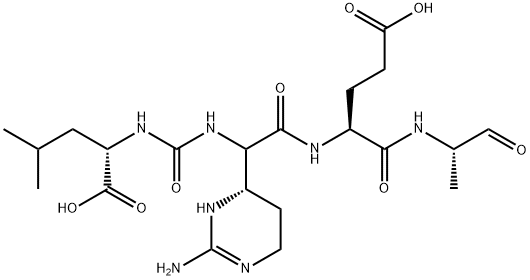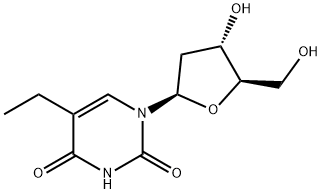Dibutylurea
- CAS NO.:1792-17-2
- Empirical Formula: C9H20N2O
- Molecular Weight: 172.27
- MDL number: MFCD00015229
- EINECS: 217-258-7
- SAFETY DATA SHEET (SDS)
- Update Date: 2024-12-18 14:15:32

What is Dibutylurea?
Chemical properties
white to pink or light beige crystalline powder
The Uses of Dibutylurea
N,N'-Dibutylurea is a degradation product of Benomyl, the active ingredient in Benlate fungicides.
The Uses of Dibutylurea
N,N''-Dibutylurea is a degradation product of Benomyl, the active ingredient in Benlate fungicides.
Preparation
The reactions under CO2 pressured conditions were carried out in a stainless steel reactor (SUS 304, 30 mL, TVS-5 type). Thus, butylamine (2.9 g, 40 mmol), Ph3SbO (370 mg, 1.0 mmol), P4S10 (890 mg, 2.0 mmol), and benzene (20 mL) were charged into the reactor, and then CO2 was introduced at a pressure of 4.9 MPa (50 kg cm-2, ca. 65 mmol) at room temperature. The reactor was heated at 80 ℃ in a temperature-regulated incubator for 12 h. When a reaction temperature higher than 100 ℃ was necessary, an oil bath was used. After the heating, the reactor was cooled and carefully decompressed. The contents were treated with hot benzene (3×20 mL) and filtered to remove an insoluble residue containing the catalyst and phosphoric acid derivatives. The collected benzene solution was then concentrated to dryness in vacuo with cooling. Pure 1,3-dibutylurea was isolated by recrystallization from ligroin (yield 2.99 g, 88%).
Synthesis Reference(s)
Synthetic Communications, 21, p. 1923, 1991 DOI: 10.1080/00397919108021783
Properties of Dibutylurea
| Melting point: | 65-75 °C |
| Boiling point: | 115°C 0,03mm |
| Density | 0.9845 (rough estimate) |
| refractive index | 1.5800 (estimate) |
| Flash point: | 115°C/0.03mm |
| storage temp. | Sealed in dry,Room Temperature |
| solubility | Chloroform (Slightly), Methanol (Slightly) |
| form | Solid |
| pka | 14.44±0.46(Predicted) |
| color | White to Off-White |
| BRN | 1704165 |
| CAS DataBase Reference | 1792-17-2(CAS DataBase Reference) |
| NIST Chemistry Reference | 1,3-Dibutylurea(1792-17-2) |
| EPA Substance Registry System | N,N'-Dibutylurea (1792-17-2) |
Safety information for Dibutylurea
Computed Descriptors for Dibutylurea
New Products
Tert-butyl bis(2-chloroethyl)carbamate (S)-3-Aminobutanenitrile hydrochloride N-Boc-D-alaninol N-BOC-D/L-ALANINOL 3-Morpholino-1-(4-nitrophenyl)-5,6-dihydropyridin- 2(1H)-one N-octanoyl benzotriazole 3,4-Dibenzyloxybenzaldehyde 1,1’-CARBONYLDIIMIDAZOLE R-2-BENZYLOXY PROPIONIC ACID 1,1’-CARBONYLDI (1,2-4 TRIAZOLE) 4-HYDROXY BENZYL ALCOHOL 3-NITRO-2-METHYL ANILINE (2-Hydroxyphenyl)acetonitrile 4-Bromopyrazole 5-BROMO-2CYANO PYRIDINE 5,6-Dimethoxyindanone 5-broMo-2-chloro-N-cyclopentylpyriMidin-4-aMine 2-(Cyanocyclohexyl)acetic acid 4-methoxy-3,5-dinitropyridine 2-aminopropyl benzoate hydrochloride 1-(4-(aminomethyl)benzyl)urea hydrochloride tert-butyl 4- (ureidomethyl)benzylcarbamate diethyl 2-(2-((tertbutoxycarbonyl)amino) ethyl)malonate Ethyl-2-chloro((4-methoxyphenyl)hydrazono)acetateRelated products of tetrahydrofuran




![8-acetyl-3-dodecyl-7,7,9,9-tetramethyl-1,3,8-triazaspiro[4.5]decane-2,4-dione](https://img.chemicalbook.in/CAS/GIF/82537-67-5.gif)
![METHYL 1-[(CYCLOHEXYLAMINO)CARBONYL]-4-HYDROXY-2-PYRROLIDINECARBOXYLATE](https://img.chemicalbook.in/StructureFile/ChemBookStructure2/GIF/CB3673885.gif)


You may like
-
 N,N'-Di-n-butylurea CAS 1792-17-2View Details
N,N'-Di-n-butylurea CAS 1792-17-2View Details
1792-17-2 -
 Dibutylurea 95% CAS 1792-17-2View Details
Dibutylurea 95% CAS 1792-17-2View Details
1792-17-2 -
 1,3-DIBUTYLUREA CAS 1792-17-2View Details
1,3-DIBUTYLUREA CAS 1792-17-2View Details
1792-17-2 -
 2-ETHYLPYRIDINE 100-71-0 99%View Details
2-ETHYLPYRIDINE 100-71-0 99%View Details
100-71-0 -
 7439-89-6 Electrolytic Iron Flakes 99.9% MaxView Details
7439-89-6 Electrolytic Iron Flakes 99.9% MaxView Details
7439-89-6 -
 7439-89-6 98.0% MinView Details
7439-89-6 98.0% MinView Details
7439-89-6 -
 Reduced Iron Powder 99.8% MaxView Details
Reduced Iron Powder 99.8% MaxView Details
7439-89-6 -
 Electrolytic Iron Powder 7439-89-6 99.8% MaxView Details
Electrolytic Iron Powder 7439-89-6 99.8% MaxView Details
7439-89-6